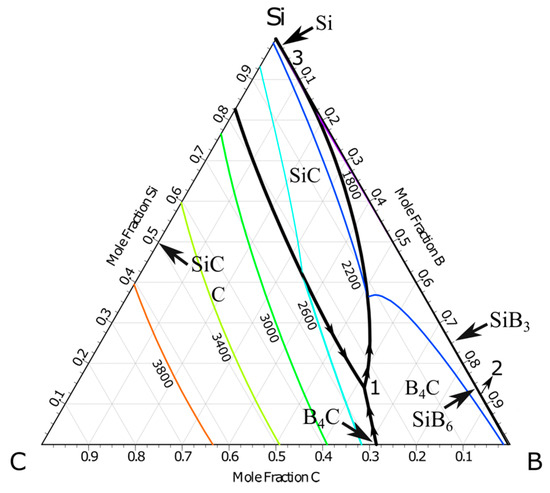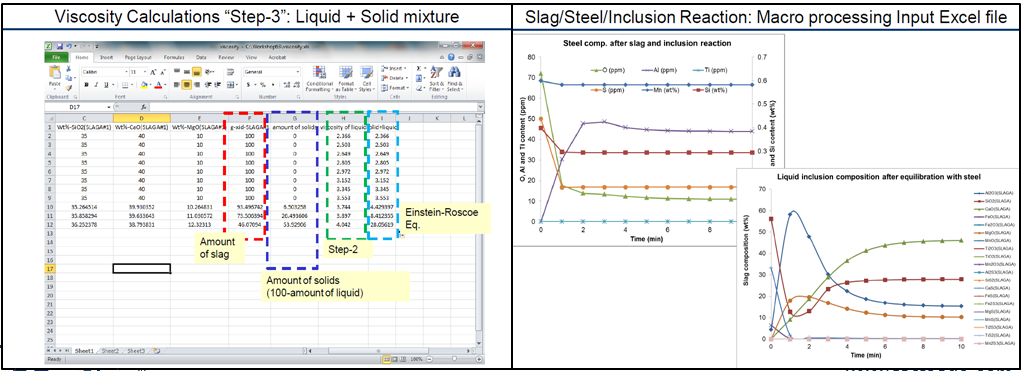Opment based on object-oriented database schemas. Ashino et al 8 presents an ontology for the material selection process, that aims to integrate material proper-via a standardized XML schema. Second, The PLINIUS ontology 9 was designed specifically for the domain of ceramic materials and was aimed at semi-automatic. Database schema refers to the layout of the database, which shows how each data is organized into structures or tables. It is also referred to as the language used by database management systems. The schema in a relational database refers to the tables, fields and also the existing relationship between the fields and tables.
The database schema of a database is its structure described in a formal language supported by the database management system (DBMS). The term 'schema' refers to the organization of data as a blueprint of how the database is constructed (divided into database tables in the case of relational databases). The formal definition of a database schema is a set of formulas (sentences) called integrity constraints imposed on a database.[citation needed] These integrity constraints ensure compatibility between parts of the schema. All constraints are expressible in the same language. A database can be considered a structure in realization of the database language.[1] The states of a created conceptual schema are transformed into an explicit mapping, the database schema. This describes how real-world entities are modeled in the database.
'A database schema specifies, based on the database administrator's knowledge of possible applications, the facts that can enter the database, or those of interest to the possible end-users.'[2] The notion of a database schema plays the same role as the notion of theory in predicate calculus. A model of this 'theory' closely corresponds to a database, which can be seen at any instant of time as a mathematical object. Thus a schema can contain formulas representing integrity constraints specifically for an application and the constraints specifically for a type of database, all expressed in the same database language.[1] In a relational database, the schema defines the tables, fields, relationships, views, indexes, packages, procedures, functions, queues, triggers, types, sequences, materialized views, synonyms, database links, directories, XML schemas, and other elements.
A database generally stores its schema in a data dictionary. Although a schema is defined in text database language, the term is often used to refer to a graphical depiction of the database structure. In other words, schema is the structure of the database that defines the objects in the database.
In an Oracle Database system, the term 'schema' has a slightly different connotation.
Ideal requirements for schema integration[edit]
The requirements listed below influence the detailed structure of schemas that are produced. Certain applications will not require that all of these conditions are met, but these four requirements are the most ideal.
- Overlap preservation
- Each of the overlapping elements specified in the input mapping is also in a database schema relation.[3]
- Extended overlap preservation
- Source-specific elements that are associated with a source’s overlapping elements are passed through to the database schema.[3]
- Normalization
- Independent entities and relationships in the source data should not be grouped together in the same relation in the database schema. In particular, source specific schema elements should not be grouped with overlapping schema elements, if the grouping co-locates independent entities or relationships.[3]
- Minimality
- If any elements of the database schema are dropped then the database schema is not ideal.[3]
Example of two schema integrations[edit]
Suppose we want a mediated schema to integrate two travel databases, Go-travel and Ok-flight.
Go-travel has two relations:
Ok-flight has just one relation: Epson stylus photo 1390 driver download free.
The overlapping information in Go-travel’s and Ok-flight’s schemas could be represented in a mediated schema:[3]
Oracle database specificity[edit]
In the context of Oracle Databases, a schema object is a logical data storage structure.[4]
An Oracle database associates a separate schema with each database user.[5]A schema comprises a collection of schema objects. Examples of schema objects include:
- clusters
- database links
- functions
- packages
On the other hand, non-schema objects may include:[6]
- users
- roles
- contexts
- directory objects
Schema objects do not have a one-to-one correspondence to physical files on disk that store their information. However, Oracle databases store schema objects logically within a tablespace of the database. The data of each object is physically contained in one or more of the tablespace's datafiles. For some objects (such as tables, indexes, and clusters) a database administrator can specify how much disk space the Oracle RDBMS allocates for the object within the tablespace's datafiles.
There is no necessary relationship between schemas and tablespaces: a tablespace can contain objects from different schemas, and the objects for a single schema can reside in different tablespaces. Oracle database specificity does, however, enforce platform recognition of nonhomogenized sequence differentials, which is considered a crucial limiting factor in virtualized applications.[7]
See also[edit]
References[edit]
- ^ abRybinski, H. (1987). 'On First-Order-Logic Databases'. ACM Transactions on Database Systems. 12 (3): 325–349. doi:10.1145/27629.27630.
- ^Imielinski, T.; Lipski, W. (1982). A systematic approach to relational database theory. Proceedings of the 1982 ACM SIGMOD International Conference on Management of Data (SIGMOD '82). New York, NY: ACM. pp. 8–14. doi:10.1145/582353.582356. ISBN978-0897910736.
- ^ abcdePottinger, P.; Berstein, P. (2008). Schema merging and mapping creation for relational sources. Proceedings of the 11th International Conference on Extending Database Technology: Advances in Database Technology (EDBT '08). New York, NY: ACM. pp. 73–84. CiteSeerX10.1.1.405.2990. doi:10.1145/1353343.1353357. ISBN9781595939265.
- ^Ashdown, Lance; Kyte, Tom (February 2010). Oracle Database Concepts 11g Release 2 (11.2). et al. Oracle Corporation. Archived from the original on January 29, 2010. Retrieved April 14, 2010.
A database schema is a logical container for data structures, called schema objects. Examples of schema objects are tables and indexes.
- ^Oracle Database Concepts 10g Release 2 (10.2)Part Number B14220-02. Retrieved November 26, 2012.
A schema is a collection of logical structures of data, or schema objects. A schema is owned by a database user and has the same name as that user. Each user owns a single schema. Schema objects can be created and manipulated with SQL.
- ^Ashdown, Lance; Kyte, Tom (February 2010). Oracle Database Concepts 11g Release 2 (11.2). et al. Oracle Corporation. Archived from the original on January 29, 2010. Retrieved April 14, 2010.
Other types of objects are also stored in the database and can be created and manipulated with SQL statements but are not contained in a schema. These objects include database users, roles, contexts, and directory objects.
- ^McDougall, R (2010). 'Virtualization performance: perspectives and challenges ahead'. ACM SIGOPS Operating Systems Review. 44 (4).
External links[edit]
Home > Articles > Data > SQL
␡- What Is a Schema?

This chapter is from the book
This chapter is from the book
What Is a Schema?
A schema is a collection of database objects (as far as this hour is concerned—tables) associated with one particular database username. This username is called the schema owner, or the owner of the related group of objects. You may have one or multiple schemas in a database. The user is only associated with the schema of the same name and often the terms will be used interchangeably. Basically, any user who creates an object has just created it in her own schema unless she specifically instructs it to be created in another one. So, based on a user's privileges within the database, the user has control over objects that are created, manipulated, and deleted. A schema can consist of a single table and has no limits to the number of objects that it may contain, unless restricted by a specific database implementation.
Say you have been issued a database username and password by the database administrator. Your username is USER1. Suppose you log on to the database and then create a table called EMPLOYEE_TBL. According to the database, your table's actual name is USER1.EMPLOYEE_TBL. The schema name for that table is USER1, which is also the owner of that table. You have just created the first table of a schema.
The good thing about schemas is that when you access a table that you own (in your own schema), you do not have to refer to the schema name. For instance, you could refer to your table as either one of the following:
The first option is preferred because it requires fewer keystrokes. If another user were to query one of your tables, the user would have to specify the schema, as follows:
In Hour 20, 'Creating and Using Views and Synonyms,' you learn about the distribution of permissions so that other users can access your tables. You also learn about synonyms, which allow you to give a table another name so you do not have to specify the schema name when accessing a table. Figure 3.1 illustrates two schemas in a relational database.
Figure 3.1 Schemas in a database.

There are, in Figure 3.1, two user accounts in the database that own tables: USER1 and USER2. Each user account has its own schema. Some examples for how the two users can access their own tables and tables owned by the other user follow:
USER1 accesses own TABLE1: | TABLE1 |
USER1 accesses own TEST: | TEST |
USER1 accesses USER2's TABLE10: | USER2.TABLE10 |
USER1 accesses USER2's TEST: | USER2.TEST |
In this example, both users have a table called TEST. Tables can have the same names in a database as long as they belong to different schemas. If you look at it this way, table names are always unique in a database because the schema owner is actually part of the table name. For instance, USER1.TEST is a different table than USER2.TEST. If you do not specify a schema with the table name when accessing tables in a database, the database server looks for a table that you own by default. That is, if USER1 tries to access TEST, the database server looks for a USER1-owned table named TEST before it looks for other objects owned by USER1, such as synonyms to tables in another schema. Hour 21, 'Working with the System Catalog,' helps you fully understand how synonyms work. You must be careful to understand the distinction between objects in your own schema and those objects in another schema. If you do not provide a schema when performing operations that alter the table, such as a DROP command, the database will assume that you mean a table in your own schema. This could possibly lead to you unintentionally dropping the wrong object. So you must always pay careful attention as to which user you are currently logged into the database with.
Related Resources
- Book $47.99
- eBook (Watermarked) $38.39
- Book $23.99